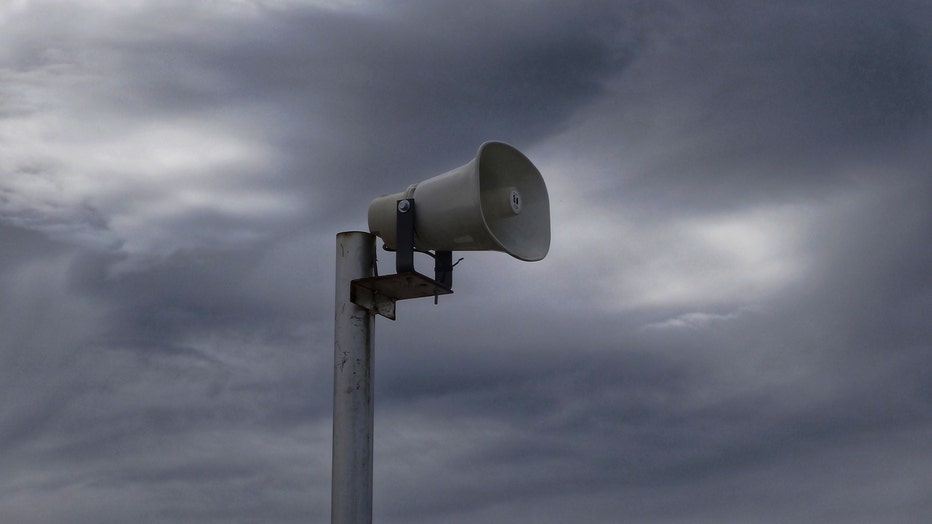How you should prepare for a tornado
Forecasters can generally forecast the threat of tornadoes, but where they touch down is still a bit unpredictable.
Preparing for a twister ahead of time can help you stay safe in the event one sweeps through your area.
Here are some steps you can take now to prepare for a future tornado.
Have a way to get weather alerts

Tornado siren against a backdrop of dark clouds. via Getty Images
Mobile devices have made it easier than ever to stay informed about the weather. Before severe storms hit, make sure your device is fully charged and configured correctly to get weather alerts.
The FOX Weather app can send you alerts whenever severe weather threatens your location. Here’s how to set them up:
- Tap on the gear icon in the upper-left corner of the homepage.
- Tap on "Locations," and make sure that you have the "Enable current location" option turned on.
- Tap the back button and then tap on "Notification Management." Make sure the "Current Location" option is turned on under "Severe Weather Alerts.
The national Emergency Alert System can also send weather alerts to your phone. Each operating system is a bit different, but you can find the options to configure these alerts in the "Settings" on your device.
If you have a weather radio, make sure you have fresh batteries in it, so it can still receive alerts in the event of a power outage.
Know the difference between Tornado Watch, Tornado Warning
Watches and warnings are different levels of weather alerts.
If a Tornado Watch is issued, it means that you should prepare for tornadic weather. Pay close attention to the forecast.
If a Tornado Warning is issued, it means a tornado is imminent or happening now, and you should take action. In the case of tornadoes, it means you should immediately take shelter in your safe place.
Learn more about watches and warnings.
Find your safe place
Before a storm strikes, you should determine the safest place to be in your home in the event of a tornado.
This would be a place on the lowest level, in the center of the floor and away from windows. You want to put as many walls between you and the tornado as possible. An interior closet or hall is best.
HERE'S WHERE TORNADOES ARE MOST LIKELY TO OCCUR IN EACH MONTH
If you live in a mobile home, you should leave well in advance and find a more sturdy building for shelter. If no shelter is nearby, the safest place to be is in a ditch or culvert.
Don’t forget to cover your head. Something like a helmet is best, but anything that can be used to protect your head from flying debris will work.
Learn more about developing a tornado safety plan.
Check your emergency supplies
In the event of a tornado outbreak, you could lose power or water or both for several days.
The Federal Emergency Management Agency recommends keeping at least a three-day supply of food and water on hand in the event of an emergency.
Your emergency supplies should also include a first aid kit, flashlights, batteries and a whistle to signal for help.
Learn more about building a weather emergency kit.
Keep important documents safe
Make sure important documents are kept in a fire-proof and waterproof safe. These documents include birth certificates, titles, Social Security cards and insurance documents.
Bring things that can get blown around inside
Whenever high winds happen, things like patio furniture and umbrellas, garbage cans and lawn decorations can become projectiles. It’s best to bring those kinds of objects inside until storms pass.

